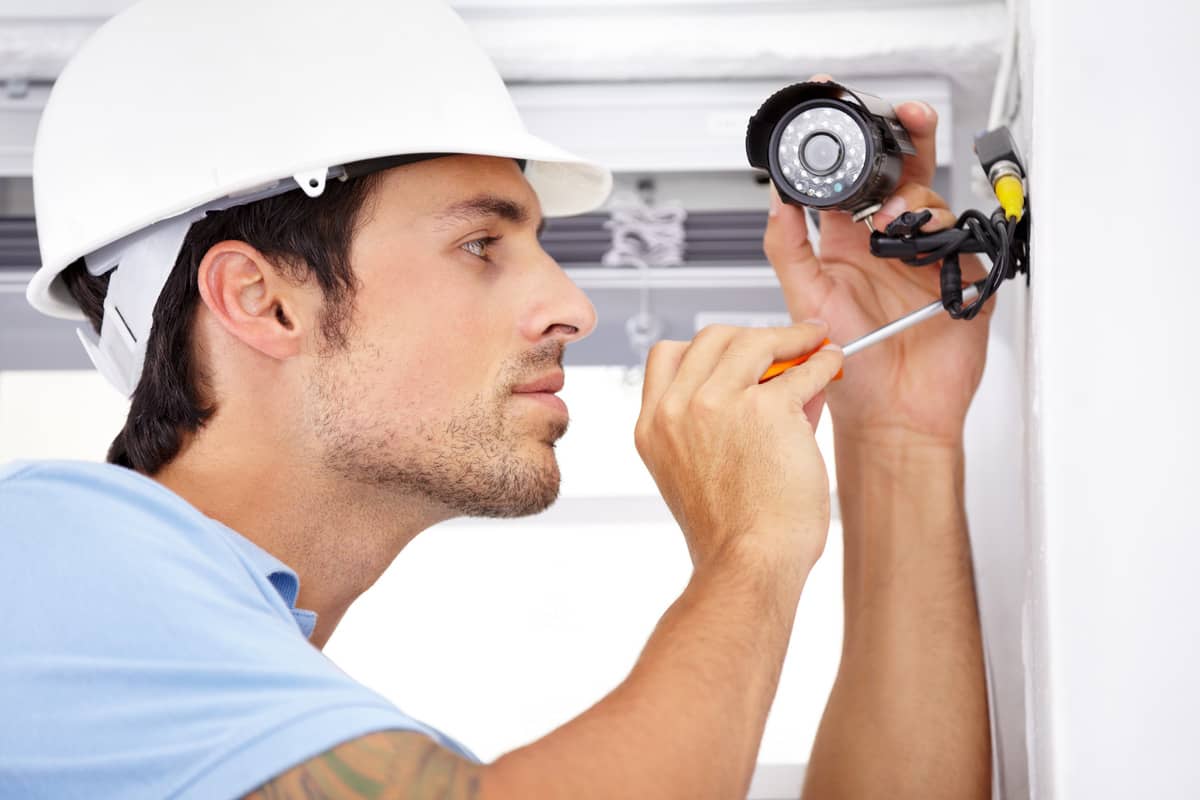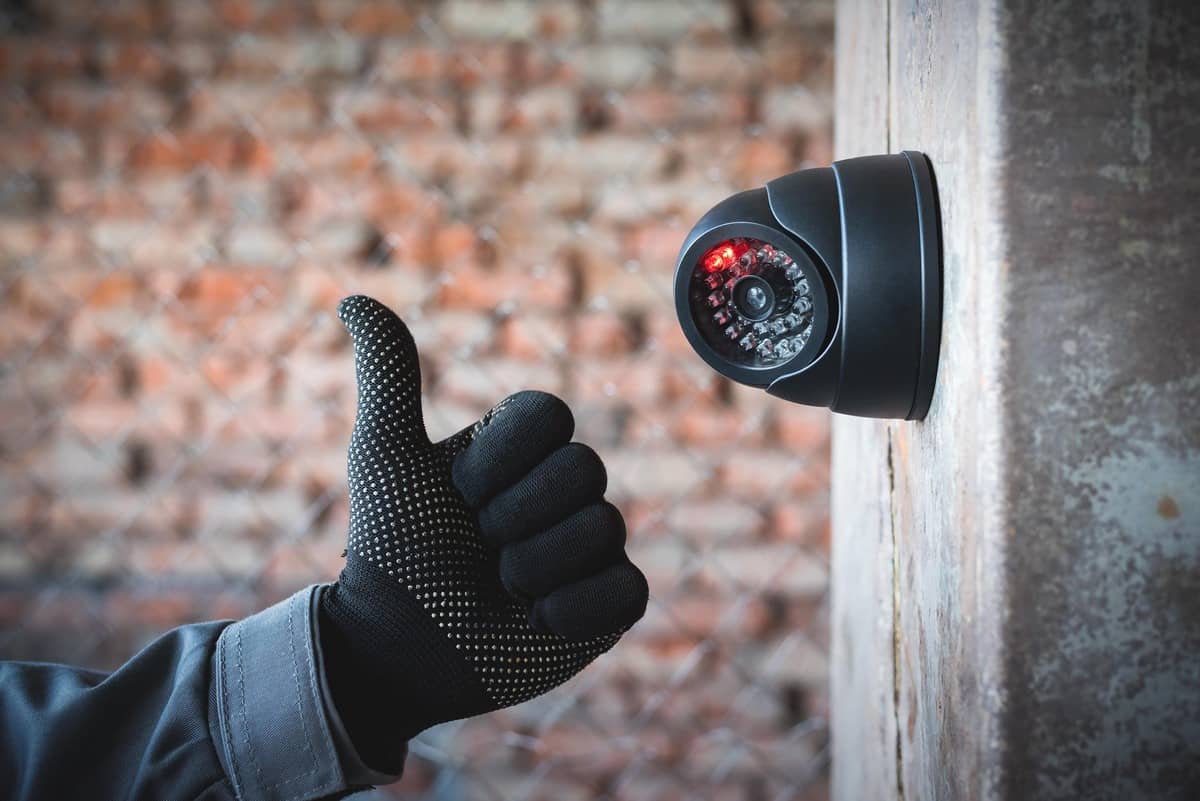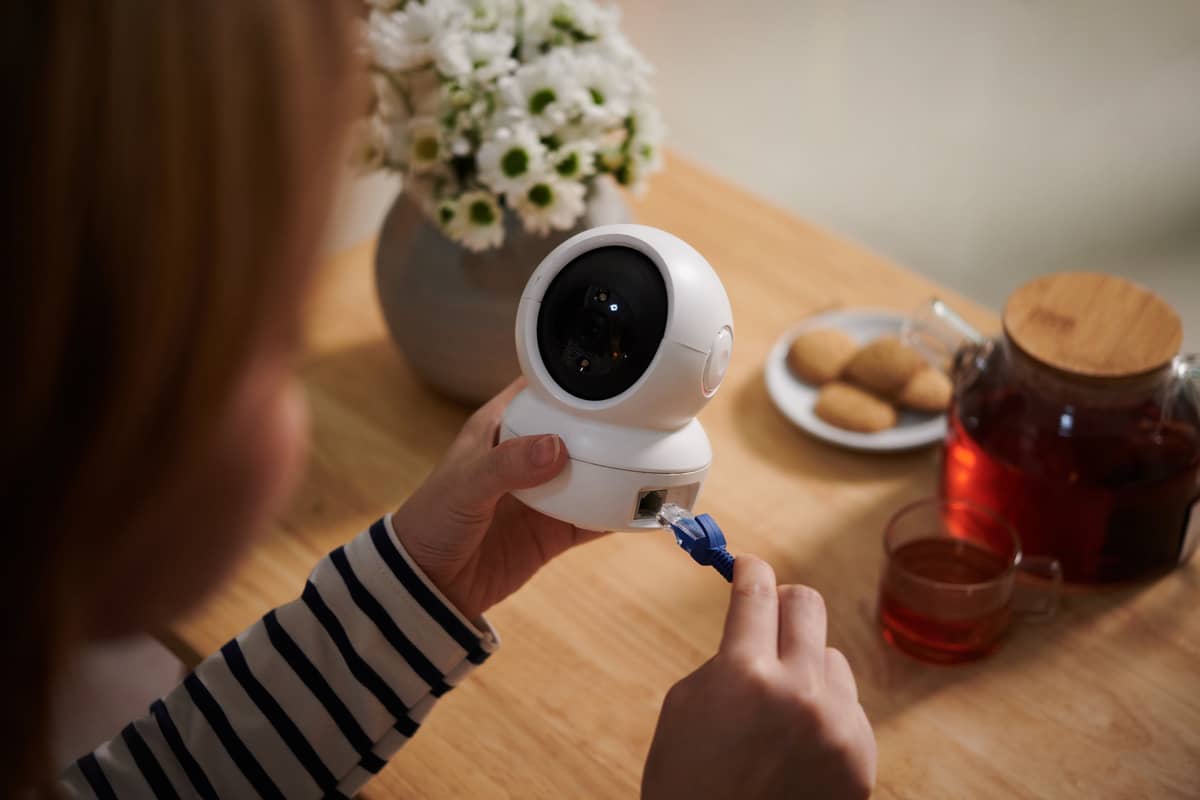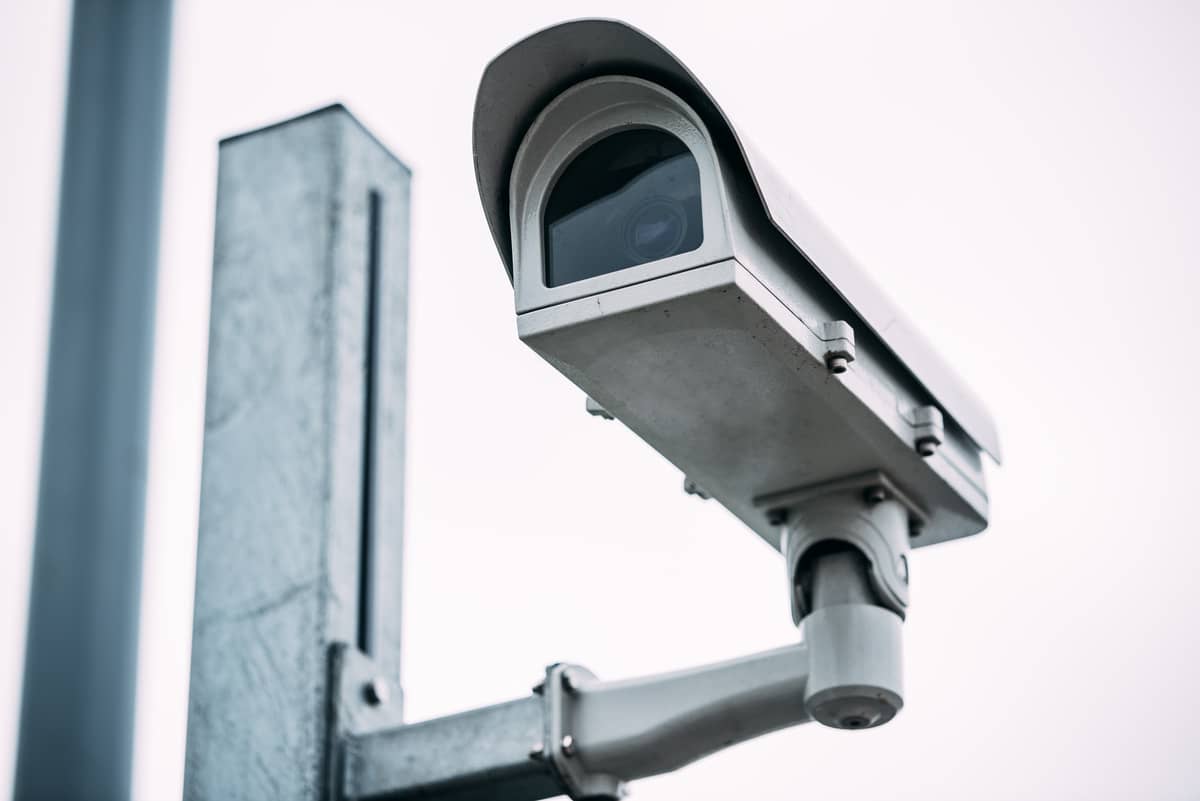The Role of PoE Network Infrastructure in an Effective IP Security Camera Surveillance System
IP cameras and network cameras come with immense benefits for surveillance. They collect and send video feeds directly to the cloud, making storing and accessing footage on demand easier. But that need for simultaneous data and power connections can complicate the system’s setup and operation, which makes PoE IP security cameras such a crucial technology.
At its core, the idea is simple. Power-over-Ethernet (PoE) allows your IP security surveillance cameras to operate with a single cable that can supply power and data feeds to and from each camera.
Eliminating one cable for a single surveillance camera might not make a big difference. But for organizations using large camera networks, the potential advantages of eliminating half of all the required wiring can be immense. Options for camera placement increase and become more flexible, installation costs decline, maintenance simplifies, and the scalability and safety of the network increase.
Of course, these benefits are not automatic. To get there, you need a strong network infrastructure that can support your IP security camera surveillance at scale. Without that infrastructure, the network can become unreliable and difficult to operate.
That’s why we’ve created this guide to network requirements for your IP security camera surveillance system. We’ll hit everything from network speed to choosing the right hardware components and from future-proofing to the constraints you might encounter. Let’s dig in.
Understanding the Network Requirements for Your IP Security Camera Surveillance
Surveillance networks are increasingly built with IP cameras, but that build requires a steady network connection to support it. With the video surveillance market reaching nearly $145 billion by 2027, understanding those requirements now can pay significant dividends down the road.
The exact bandwidth you will need to support your cameras depends on the resolution at which they record. Generally speaking, it’s safe to assume a 6 MBit per second bandwidth for a camera recording at full HD, with lower requirements for 720p resolution and higher requirements for 4K resolutions and above.
These requirements multiply when additional cameras are added to the network. For your surveillance network to truly scale, you’ll need to support however many cameras you plan to install, plus the bandwidth required for each. A 15-camera network recording at HD quality would require a (15×6) 90 MBit/s network connection.
In addition, reliability is key to supporting your network. Modern IP cameras don’t have significant storage capacity but require the transmission of their footage to a cloud location. An interrupted connection means interrupted footage, introducing potentially significant reliability issues.
Finally, maintaining data security is essential due to the sensitive nature of the recorded surveillance footage. Any system that cannot ensure this security introduces potential flaws that, when exploited, could be devastating.

4 Challenges in Implementing Your IP Security Surveillance Infrastructure
Building your network infrastructure for an IP security camera system does not always go smoothly or without issues. That’s because a few common constraints and challenges can enter the equation, and you will likely need to build around them. The most common challenges in this environment include:
- Cost and budget constraints. High-quality security cameras cost money, as does the infrastructure to operate them. You’ll also need to build installation and maintenance costs into this equation.
- Complexity and expertise requirements. A more complex system requires more expertise to operate and upkeep. Installing IP cameras can be complex, requiring network and electrical expertise.
- Interoperability and integration with existing systems. Few organizations build IP camera networks from scratch. Instead, new devices must be able to integrate with existing surveillance systems, adding to the network rather than replacing it or running in parallel.
- Maintenance and upkeep. The average IP camera will last between six and 10 years, but the infrastructure around it also degrades over time. Any system installation needs to include a long-term maintenance plan to keep the system in good shape.
These challenges are common in any surveillance infrastructure that goes beyond a single camera. Addressing them is a crucial piece in making sure that the network will run effectively and efficiently and stay within the budget and security goals for your organization.

5 Benefits of a Strong Network Infrastructure for PoE IP Security Cameras
The above requirements are crucial when building the infrastructure for your IP security camera network. To fulfill them, while also managing the common challenges every IP surveillance network infrastructure will encounter, you need to choose the right components. That is where Power over Ethernet enters the equation.
PoE is an especially beneficial solution for IP security camera networks because of its ability to specifically address the core requirements outlined above:
- Greater flexibility and cost savings. Delivering power and data through the same cable decreases installation complexity and allows for greater flexibility in camera placement. As some reports show, it also reduces the installation and maintenance costs for cameras.
- Improved scalability and future-proofing. Flexible and low-cost installation options also improve the scalability of the network. Thanks to the inherent bandwidth of ethernet networks, you’re able to add cameras over time, future-proofing your surveillance network in the process.
- Increased network reliability. A hardwired data connection significantly increases reliability compared to WiFi, thanks in part to its hardwired connection and the lack of outside interference. Running power and data through a single cable also increases reliability for the entire network.
- Enhanced video quality. The reliably high speed of ethernet connections also allows for significantly higher video quality. Especially with the right compression in place, most ethernet networks can support at least a few cameras streaming at a 4K resolution.
- Elevated security and encryption. A PoE network comes with inherent security benefits because it’s hardwired. Any attempt to infiltrate this type of system has to include a physical device plugged into the network, while encryption can prevent data loss or theft from the connected cloud storage.
Finally, PoE provides a benefit that extends to all IP surveillance camera networks. Since the system runs in the cloud, it can be accessed and managed remotely. Video streams no longer rely on real-time viewing, but can be recorded for later scrubbing and used without needing to access the camera itself.

Building a Network Infrastructure for IP Security Camera Surveillance
The requirements and challenges of an IP security camera network, combined with the advantages of PoE in this context, provide a sufficient overview to build the right infrastructure for long-term success. More specifically, this process includes choosing the right components, designing the right architecture, implementing appropriate network security measures, and testing and monitoring the network over time.
Choosing the Right Network Components
Naturally, moving to a PoE network requires adding network components that are designed to support this setup. PoE-enabled surveillance equipment may include:
- PoE cameras that can receive power and transmit data through a single ethernet cable.
- Camera housings that protect the surveillance equipment from the environment while also allowing the connection of existing non-PoE cameras to the network.
- PoE switches that can distribute both data and power among multiple PoE devices.
- PoE injectors that can add PoE capabilities by adding power supply to an existing ethernet network.
Designing a Network Architecture for IP Security Camera Surveillance
Choosing the right components means mapping out your full network needs, then determining the larger architecture of the network. A map of the network can help you determine which components you’ll need for the build.
For example, most PoE solutions have a range limit of about 100 meters (328 feet), but you can build extensions into the network as needed. You’ll also need to ensure that your switches account for the number of devices on the network and any future devices you may need when you decide to scale up.
Implementing Appropriate Network Security Measures
When designing any network, you have to make sure that the network is secure enough to protect against incidental and intentional outside influences. This is especially important for surveillance networks. A few steps can help:
- Choose external and hybrid surge protection equipment that protects individual devices against low-level and high-level surges, installed at multiple ends in the network.
- Shield cables and receptacles with an external layer around the internal conductor, allowing for grounding that reduces and eliminates any interference.
- Use NEMA-rated enclosures for your individual devices that protect them against harsh weather conditions.
The wired nature of the network inherently increases security. Still, you will need to at least think about access control for your network, allowing access only to those who need to get to the data.
Testing and Monitoring the Network for Long-Term Success
Finally, it’s vital to put a plan in place that can test and monitor your network over time. Initial testing allows you to iron out any connectivity or reliability issue before bringing the network online, while ongoing monitoring can fix smaller, local issues before they turn into long-term and network-wide problems.

How PoE Can Power Your IP Security Camera Network
In summary, building a solid network infrastructure for your IP security camera network is essential to long-term reliability and success. PoE can play a significant role in creating that infrastructure thanks to its unique advantages and abilities to solve some of the common challenges of creating IP surveillance networks.
That process, however, is not automatic. Choosing the right underlying technology only matters if that technology is also applied correctly. Creating the proper network infrastructure, in other words, depends not only on choosing PoE at its foundation, but also ensuring the best possible bandwidth, components, and larger architecture to supply the network both in the present and the future.
It’s a complex process and one that might not be intuitive even to network professionals if they’re not familiar with the in-depth nuances of PoE. Working with a professional partner can help to ensure that you start off on the right track, from choosing the right components to building the larger architecture. With a reliable partner, you can fully leverage the benefits PoE IP security cameras can bring to your surveillance network.

Frequently Asked Questions About PoE IP Security Camera Surveillance
What is the minimum network speed required for IP security camera surveillance?
Plan for at least 6MB/s per camera that you intend to place on the IP network. For a 10-camera network, that means you’ll need a network speed and bandwidth of 60MBit/s.
How can I ensure network reliability and prevent downtime in my IP security camera surveillance system?
A hardwired connection can help to ensure reliability and prevent downtime. Bandwidth also matters, as does ensuring that your data doesn’t flow through cables beyond their maximum length.
What are the best practices for securing my IP security camera surveillance network from cyber threats?
A hardwired surveillance network is essential to ensuring cybersecurity, as it requires any attack to come from physically-connected devices. A structured access control plan, which limits the number of people on the network, can also help.
How can I ensure seamless integration of my IP security camera surveillance system with my existing network infrastructure?
Two PoE components can help to ensure integration. PoE injectors can add power to data-only ethernet connections, while camera housings can turn non-PoE cameras into single-cord devices. Together, these devices help create a seamless network on which all IP cameras are connected, rather than running in parallel.
How can I ensure the network infrastructure for my IP security camera surveillance system is scalable for future growth?
Bandwidth and capacity are key for scalability. You have to ensure that your network can support not just the data requirements of your current cameras, but also future devices you might add. In addition, PoE switches should have enough ports to add future cameras as needed.
How can I remotely access and manage my IP security camera surveillance system through the network?
The exact nuances of remote access depend on the way the network is built. Generally speaking, each camera is assigned an IP address that you can use to access its video feed. The cameras also feed into a central storage platform that can be remotely accessed for recordings.
How can I troubleshoot network issues in my IP security camera surveillance system?
A basic troubleshooting IP camera checklist includes checking the power source of the camera and checking to see if the ethernet cable is adequately supplying data. Reboot the system as needed, and ensure that no two cameras share a single IP address. If needed, update the camera and system firmware to the most recent version.
How can I ensure the network infrastructure for my IP security camera surveillance system complies with industry standards and regulations?
Working with a professional is the best way to ensure your surveillance system complies with industry standards and regulations. The right partner will be able to tell you everything from whether your cable lengths are within the maximum range to whether the switches, cables, and camera you’re using are rated properly for their environment and the power and data they need to transmit.

- The Role of PoE Network Infrastructure in an Effective IP Security Camera Surveillance System
- Understanding the Network Requirements for Your IP Security Camera Surveillance
- 4 Challenges in Implementing Your IP Security Surveillance Infrastructure
- 5 Benefits of a Strong Network Infrastructure for PoE IP Security Cameras
- Building a Network Infrastructure for IP Security Camera Surveillance
- How PoE Can Power Your IP Security Camera Network
- Frequently Asked Questions About PoE IP Security Camera Surveillance
